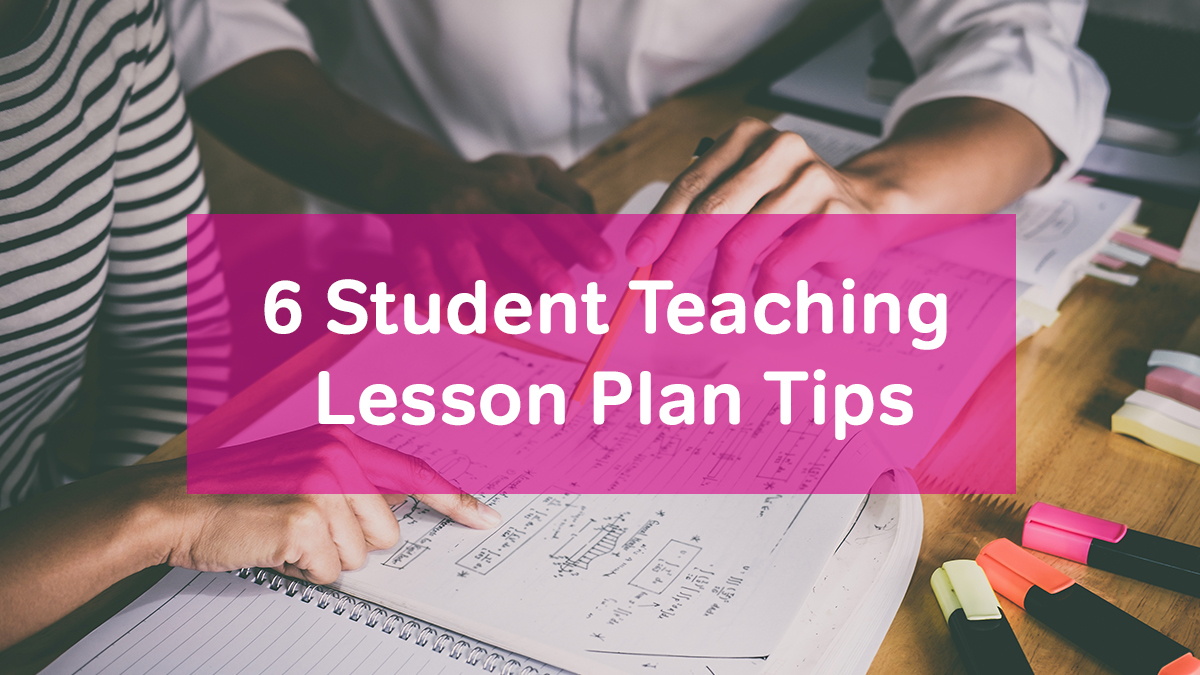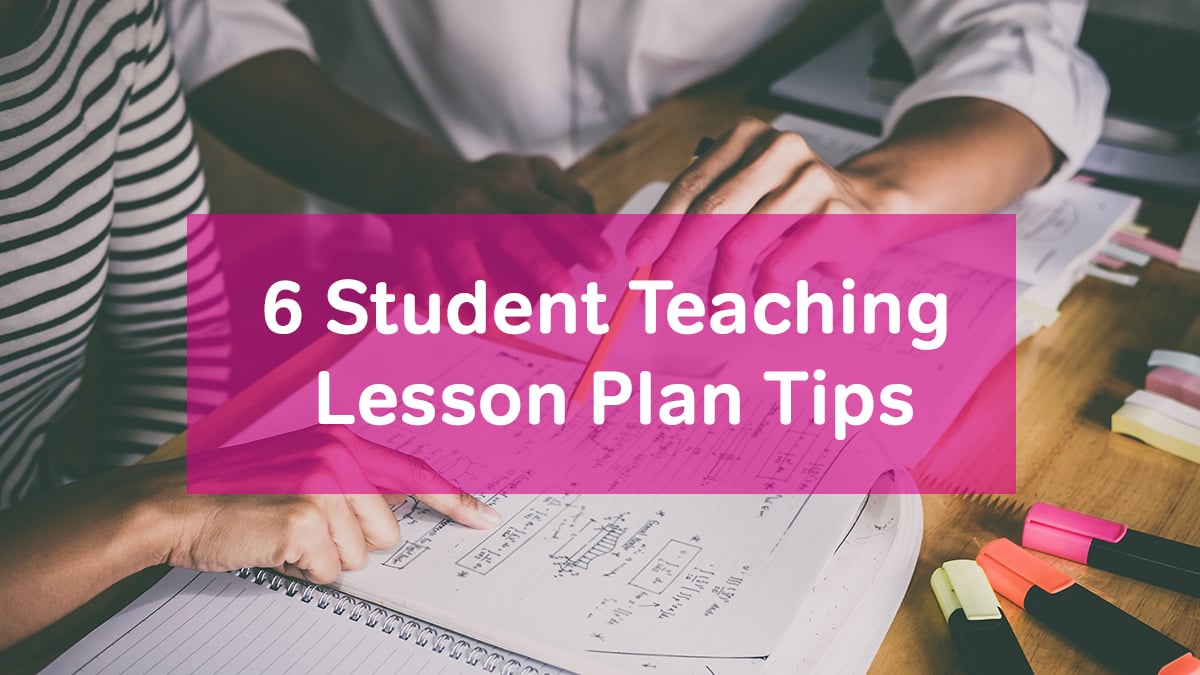
Your lesson plan should follow the format outlined by your college or cooperating teacher. In general, most lesson plans should include:
- The lesson title
- Lesson materials
- Goals/Lesson objectives
- State standards addressed
- Step-by-step lesson instructions
- Assessment
- Lesson review
As you think about what to cover or how to present information to students, incorporate these student teaching lesson plan tips to help you.

Build on Previous Lessons
Introduce a new concept a little at a time. Students should master one concept before moving on to the next. Try to ingrain the vocabulary and knowledge into their minds. Then, you can build on what they know in each subsequent lesson. Use this concept to plan several lessons or an entire unit at a time.
Strategize for Differentiation
With a classroom full of students, it’s highly unlikely that they’ll all be on the same level of understanding and abilities. Because of this, it’s important to individualize your lessons . You could plan separate material for students or adapt the material for different levels. For example, students could do a different number of questions or exercises depending on their level or abilities. You could also set up different reading groups depending on students’ reading levels. Find ways to make your lesson work for every student no matter where they are.
Contemplate Teacher vs. Student Actions
One of my professors recommended writing the step-by-step for students. Then, add a step-by-step of what you would be doing at the same time. Since it’s important to have student-centered lessons , doing this helps teachers think about what they can do to keep students involved. You don’t want to lecture the entire time. Try to make an interactive lesson based on what your students need to learn.
Think about Timing
Another thing that is helpful to include on your lesson plan is the time. Consider a realistic idea of how long each part of your lesson should take. You should probably add a few minutes to each one. Then, watch the clock during your lesson to ensure that you can get through the material.
Plan to be Flexible
Even while watching the clock, it’s important to be flexible. Students might have more questions than you expected. They may require more time to complete an assignment. They might want to explore an idea a little more. Rather than cutting them off, it’s a good idea to dig in and rearrange the lesson as needed. Flexibility is key in any lesson plan.
Consider Alternate Endings
What happens if your lesson ends with 10 or 20 minutes before class gets out? Do you have filler activities that you could use? What happens if your lesson goes over the allotted time? What will you do if you need to stop your students earlier than expected? Consider these options and determine how you’ll end class if the lesson runs too short or too long.
As a student teacher, it takes some time to figure out how to plan lessons that will work for students. You need to be flexible, creative, quick thinking, and have a good sense of humor. Collect ideas and materials that you can use, and put extra thought into your lessons to create one that will run as smoothly as possible.



